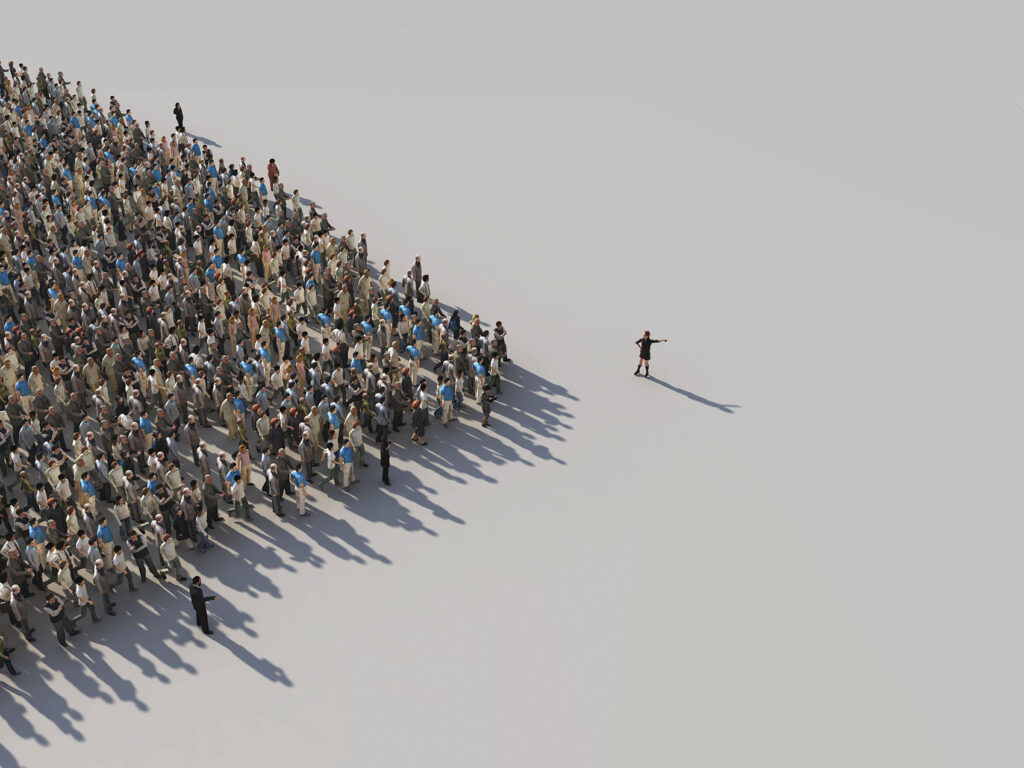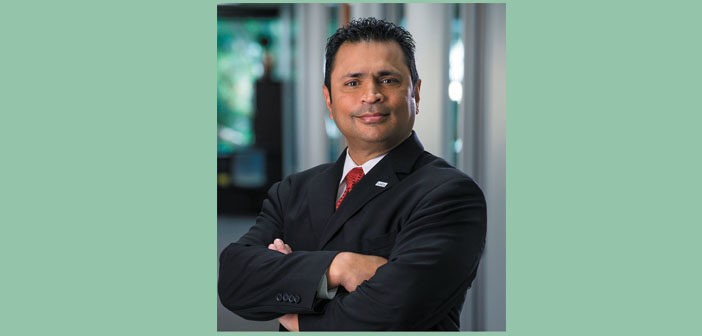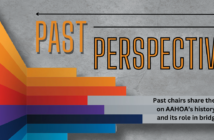AAHOA Past Chairman Ash Patel acted swiftly and decisively in the early stages of COVID-19
by PETER BERK
As the hospitality industry continues to face unparalleled economic hardships imposed by the COVID-19 pandemic, PMZ is pleased to present a second in-depth interview with an AAHOA Past Chairman. These discussions shed light on the struggles and challenges they faced as individual owners and as chair, along with how those experiences prepared them to meet today’s challenges. For this month’s edition, we sat down for an exclusive chat with Ash Patel.
Patel has more than 30 years of hotel experience managing, developing, acquiring, renovating, and repositioning more than 25 hotel assets, representing 2,500+ rooms with brand affiliations such as Hilton, Marriott, IHG, Choice Hotels, Wyndham Worldwide, Best Western, and G6 Hospitality. Patel is currently the President and CEO of Southwest Hospitality Management, a company with 14 hotels, and an additional four in the pipeline. The Mesa, AZ-based lodging development, management, and investment firm employs more than 500 people at its properties throughout the United States.
Patel was first elected to the AAHOA Board of Directors in 2003, representing the Southwest region. In 2005, he was named Treasurer and went on to become Chairman from 2008 to 2009. Patel established the AAHOA PAC and lobbying efforts in Washington, DC, for the association. During his tenure, AAHOA hired lobbying firm Patton Boggs to represent its members, as well as its efforts on the Hill to lobby for industry issues. He also led the Government Affairs Committee and, most recently, launched Iridescent Hotels, a third-party hotel management company based out of Keller, TX.
What year did you get into the business? Where and what was the first hotel that you owned?
In December of 1991, my wife Asha and I started off with a small minority partnership in an Econo Lodge in Flagstaff, AZ. It was a 50-room hotel we operated as owners/managers, working 24/7 for five years. That small ownership developed into a partnership, and we ended up managing four hotels during that decade. During that time, we also built the first “Hilton-branded” hotel in Flagstaff, a Hampton Inn we opened in 1995.
How many hotels does your firm own today? What brands are they?
We currently have 10 hotels representing the following brands: Marriott, Hilton, IHG, Best Western, and Choice. We also have three hotels in the development pipeline. We intend to fast-track them after the COVID-19 epidemic subsides.
When opening your first hotel, you faced adversity. Describe a challenge that was completely unexpected.
The one big hurdle we faced, which many of our fellow hoteliers can attest to, is that it is easy to go over budget and run out of money before the project is completed. You can spend money quickly when building a solid asset without cutting corners, trying to use the best material and skilled labor. I was in my 20s, still a novice in the industry, and sticking to a budget was tough. I wanted to deliver a high-quality product and learned building relationships based on trust and work ethic was going to be the key to my success, and getting a project complete in the hotel business.
How did you overcome that challenge?
“Never give up mentally or refuse to fail” is a motto I told myself and still tell myself every single day. I leveraged all of my relationships to scrounge up the shortfall of funds and get the project complete on time and on budget.

PHOTOBANK.KIEV.UA/SHUTTERSTOCK.COM
What were the first few things you did at your firm when you realized the COVID-19 crisis would be a serious calamity?
We listened to the brands, the Centers for Disease Control and Prevention (CDC), and the local and state governments to give us direction. There was a lot of confusion, as no one was on the same page. When we realized the seriousness of the situation, we went into a crisis mode of operations, similar to how we operated through 9/11 and the 2008 downturn. Initially, there was some panic at the property level, but our managers adjusted to the new normal. We also ordered PPE and other needed supplies early on.
Staying in constant communication with our managers was how we addressed challenges and comforted anxiety. To streamline operations, we had to cut expenses proactively and, unfortunately, had to downsize our team. So, within the first two weeks, a majority of our staff were furloughed. The only consolation was that everyone was caught in the same storm but on different boats. As of now, we are floating. However, we do not know how long we can maintain course and survive. Nothing could have prepared us for this pandemic. Still, with the help of great partners and an excellent team, we have been able to weather the storm so far. The question remains: what happens next if there is a second wave? I will have to figure it out then. As I said before, “never give up.”
How did you make the decision to keep your hotels open or close them?
We decided to keep all of our hotels open. Although we were doing single-digit occupancy for almost 12 weeks, we felt we needed to keep on as many team members as financially possible. We also made sure our hotel facilities were maintained while operating at low occupancy. Each property had a checklist to ensure its upkeep and cleanliness. Our maintenance department needed to maintain our swimming pools, filtration systems, softeners, pipes, flushing drains, and laundry machines (so they didn’t calcify) weekly.
We were cognizant about health issues that occur when an asset is shut down for months, like Legionnaires’ disease and other mold-related issues. The cost of closing down Legionnaires’ disease and reopening the property management system with the brands, along with the third-party contracts, would be as costly at the restart. We felt it was in our best interest to stay open, and that is what we did. Cost-wise, it almost evens out since we did not lose many team members, saving us the expense of hiring and training. Looking back, I have no regrets of staying open.
What steps are you taking at your hotels to make travelers comfortable?
We paid attention to the CDC, local health departments, OSHA, and the brands to guide us through the protocols of having a safe and healthy place for our customers. We practice social distancing, having signage around the properties for both staff and guests, added elevator landings, hand sanitizers at every entrance, and additional training and protocols that all public areas be cleaned and sanitized frequently, especially the high-touch point areas within the hotels. All staff members are required to wear masks and gloves; plexiglass screens have been installed at the check-in desk and the initial arrival itself. Guests are handed wellness packs upon arrival with hand sanitizer, masks, and more.
Hopefully, all of this gives our customers the confidence that we are doing what we can to keep everyone safe. Currently, those staying over do not receive housekeeping services unless requested, as we try to keep our staff from entering the room, so neither party is exposed to COVID-19. New housekeeping and laundry protocols have been established, including purchasing brand-mandated sanitizer spray units, along with brand and CDC-approved cleaning supplies to ensure our property is meeting the most stringent safety and cleanliness standards.
All non-essential items have been removed from the rooms, such as the directory, advertising materials, flyers, and the coffee maker. TV remotes are covered with plastic bags that are discarded after every check-out, and remotes are sanitized. The breakfast room is closed as our properties are only offering a to-go option, and our gyms and swimming pools are closed per local and state government mandates. Plans are in place for cleaning and social distancing in those areas when we are able to reopen them safely.
Guests are encouraged to use mobile check-in, but those who prefer a key are asked to drop them in a sanitizer bowl when checking out. The new protocols and procedures are a significant investment for us to make at a time when occupancy is low. Still, it is the right thing to do, and we plan to continue to follow all recommendations for the safety of our guests and employees.
How did your first-ever unexpected crisis influence your decision process during the COVID-19 outbreak?
My first crisis was 9/11 – our country was not prepared for a terrorist act. Since then, we have worked on and implemented crisis plans and processes. Although no two crises are the same, the majority of the processes are the same. Trust the plan and adapt to the new needs of the situation. Know there will be a ton of different emotions and challenges that come, as no two team members think or act the same. Normal life will be disrupted, and society will be in flux. Communicate with team members, stay focused, and follow the planned protocols. The safety and security of our customers, teams, and community are paramount; the rest will fall into place as we learn more. Have confidence in the decisions you make and leaders guiding the teams. With this worldwide pandemic sweeping through our cities, I am proud of our leadership teams that have guided our hotels. I feel confident that we will emerge from this successfully.
What advice would you give to other hotel owners to get through this current crisis?
Only stress about what you can control. Give it your best effort and realize that as much as you are stressed, so is your team, their families, and the rest of our country. This is an anomaly and shall pass at some point. The key thing is not to lose your humanity and health as we all go through these trying times. Stay lean on all expenses, and ensure your guests and teams that health and safety comes first. This is the time when you show customers the best service and experience possible. There is little we can control in the marketplace at this time, so focus on the fundamentals and your property. Stay involved politically, as those decisions will affect how your business will be treated, and opportunities created to survive this crisis.
The big crystal ball question: When do you expect RevPAR to get back to 2019 levels?
We predict not for at least three years. That is if there is not a second wave.
What is something interesting that people don’t know about you?
I have been riding Super Sport motorbikes since the age of 19, which is rare for a “Patel” to be doing.
Peter Berk is President of PMZ Realty Capital LLC – Hotel Finance Group. He has more than 26 years of experience in the real estate industry and is a frequent lecturer at events, including AAHOA webinars and meetings. He has arranged more than $6 billion of debt and equity transactions for hotel owners, representing more than 50,000 hotel rooms. As an industry leader, he has worked with AAHOA Members for more than 20 years on their financing needs. Berk attended George Washington University as an undergraduate and holds a graduate degree from Columbia University. He can be reached at [email protected] or 212-277-8265.




